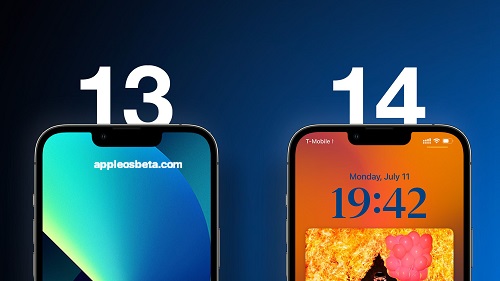The iPhone 14s are more powerful than the iPhone 13 Pros. The senior director of the iPhone design team said the base iPhone 14 is more powerful than the iPhone 13 Pro, despite having the same A15 chip.
Apple Watch Series X and Apple Watch SE 3 with larger displays could launch next year
With the iPhone 14 range, Apple has further differentiated the basic models from the Pro models by leaving the previous year’s chip on the former. In the past, all new iPhones shared chips from the same generation, mostly only differing in display size and cameras.
The basic iPhone 14, on the other hand, mounts the A15 chip already seen on the iPhone 13 range, while the iPhone 14 Pro and Pro Max mount the A16 chip. The various tests have confirmed that the difference between the two chips is less than in the past, and that the A16 is much more similar to a sort of A15+. But now, Apple says the A15 Bionic chip in the iPhone 14 offers more power than the iPhone 13 Pro.
The claim was made by senior director of the iPhone design team Richard Dinh in an interview with the Sydney Morning Herald. The reason? the new model is less prone to thermal throttling.
The standard iPhone 14s perform better than last year’s Pros, despite sharing the same chip, thanks to some internal changes. For the iPhone 14, the design has changed dramatically to include an aluminum central structure that serves as the backbone of the device.
This central structural plane helps dissipate more heat across the surface more consistently.
Dinh also pointed to other reasons that differentiate the iPhone 14s from the iPhone 13s:
While the iPhone 14 may look nearly identical to the iPhone 13 on the outside, it’s actually undergone a significant internal design overhaul, with benefits you might not immediately realize when comparing it to an older model. These include weight reductions, cheaper and easier repairability, and longer battery life.
We were able to deliver a bigger main camera than last year’s Pros, with a bigger sensor, better low-light performance, and there’s an all-new ambient light sensor at the rear.
This design also introduces our first four-sided stacked main logic board that truly condenses all of the iPhone 14’s components into a smaller space and allows us to access the board from both sides, for improved repairability.
The iPhone 13, like previous models up to the iPhone 8, required the removal of the display to access any internal components. With the iPhone 14, however, the rear glass can be removed, making repairs easier with less risk of damage.

